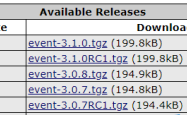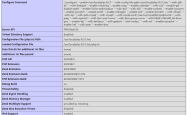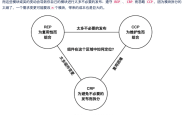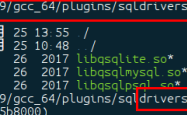PHP内存溢出的解决方法详解
什么是内存溢出
内存溢出是指应用系统中存在无法回收的内存或使用的内存过多,最终使得程序运行要用到的内存大于虚拟机能提供的最大内存。
引起内存溢出的原因有很多种,常见的有以下几种:
1 内存中加载的数据量过于庞大,如一次从数据库取出过多数据;
2 集合类中有对对象的引用,使用完后未清空;
3 代码中存在死循环或循环产生过多重复的对象实体;
4 使用的第三方软件中的BUG;
5 启动参数内存值设定的过小;
下面来看些在开发中经常遇到的内存溢出的实例
内存溢出经常报错的情况
PHP Fatal error: Allowed memory size of 268 435 456 bytes exhausted
1.处理数组时出现内存溢出
1)使用迭代生成器,可以通过继承Iterator接口实现
2)使用关键词yield
?| 1 2 3 4 5 6 7 8 9 | function xrange( $start , $end , $step = 1) { for ( $i = $start ; $i <= $end ; $i += $step ) { yield $i ; } } foreach (xrange(1, 1000000) as $num ) { echo $num , "\n" ; } |
2.使用sql查询数据,查出来很多,导致内存溢出
sql语句在mysql中可以查询,但是使用php程序查询就报php内存溢出
1)这个问题在php的官方网站叫缓冲查询和非缓冲查询。php的查询缺省模式是缓冲模式。也就是,查询数据结果一次全部提取到内存里供php程序额外的功能,比如说,计算行数,将指针指向某一行等。
更重要的是程序对数据集反复进行二次查询和过滤操作。但这种缓冲查询模式的缺陷是消耗内存,也就是用空间换速度。
2)另外一种查询模式是非缓冲查询,数据库服务器会一条一条的返回数据,而不是一次全部返回,这样的结果是php程序消耗较少的内存,但却增加了数据库服务器的压力,因为数据库会一直等待php来取数据,一直到数据全部取完。
1.首先查询数据库需要进行limit进行分页查询
2.如果不使用limit,使用非缓冲查询
1.mysql:
?| 1 2 3 4 5 6 7 8 | $conn = mysql_connect( "localhost" , "user" , "pass" ); $db = mysql_select_db( "world" ); $uresult = mysql_unbuffered_query( "SELECT Name FROM City" ); //非缓冲查询 if ( $uresult ) { while ( $row = mysql_fetch_assoc( $uresult )) { echo $row [ 'Name' ] . PHP_EOL; } } |
2.pdo_mysql:
?| 1 2 3 4 5 6 7 8 | $pdo = new PDO( "mysql:host=localhost;dbname=world" , 'my_user' , 'my_pass' ); $pdo ->setAttribute(PDO::MYSQL_ATTR_USE_BUFFERED_QUERY, false); //设置这个属性,就为非缓冲查询 $uresult = $pdo ->query( "SELECT Name FROM City" ); if ( $uresult ) { while ( $row = $uresult ->fetch(PDO::FETCH_ASSOC)) { echo $row [ 'Name' ] . PHP_EOL; } } |
3.mysqli:
?| 1 2 3 4 5 6 7 8 | $mysqli = new mysqli( "localhost" , "user" , "password" , "world" ); $uresult = $mysqli ->query( "SELECT Name FROM City" , MYSQLI_USE_RESULT); if ( $uresult ) { while ( $row = $uresult ->fetch_assoc()) { echo $row [ 'Name' ] . PHP_EOL; } } $uresult ->close(); |
3.假定日志中存放的记录数为500000条,那么解决方案如下
ini_set(‘memory_limit’,’64M’); //重置php可以使用的内存大小为64M,一般在远程主机上是不能修改php.ini文件的,只能通过程序设置。
注:在safe_mode(安全模式)下,ini_set失效
?| 1 2 3 4 5 6 7 8 9 10 11 12 13 14 15 16 17 18 19 20 21 22 23 24 25 26 27 28 29 30 31 32 33 34 35 36 37 38 39 | set_time_limit(600); //设置超时限制为6分钟 $farr = $Uarr = $Marr = $IParr = $data = $_sub = array (); $spt = ”$@#!$”; $root = ”/Data/webapps/VisitLog”; $path = $dpath = $fpath = NULL; $path = $root .”/”. date (“Y-m”, $timestamp ); $dpath = $path .”/”. date (“m-d”, $timestamp ); for ( $j =0; $j <24; $j ++){ $v = ( $j < 10) ? ”0″. $j : $j ; $gpath = $dpath .”/”. $v .”.php”; if (! file_exists ( $gpath )){ continue ; } else { $arr = file( $gpath ); ////将文件读入数组中 array_shift ( $arr ); //移出第一个单元-》 $farr = array_merge ( $farr , $arr ); unset( $arr ); } } if ( empty ( $this ->farr)){ echo ”没有相关记录!”; exit ; } while (! empty ( $farr )){ $_sub = array_splice ( $farr , 0, 10000); //每次取出$farr中1000个 for ( $i =0, $scount = count ( $_sub ); $i < $scount ; $i ++){ $arr = explode ( $spt , $_sub [ $i ]); $Uarr [] = $arr [1]; //vurl $Marr [] = $arr [2]; //vmark $IParr [] = $arr [3].” | $nbsp ;”. $arr [1]; //IP } unset( $_sub ); //用完及时销毁 } unset( $farr ); |
这里,不难看出,一方面,我们要增加PHP可用内存大小,另一方面,只要我们想办法对数组进行分批处理,分而治之,将用过的变量及时销毁(unset),一般是不会出现溢出问题的。
4.上传excel文件时,出现内存溢出的情况
在文件中分配大点的内存设置内存治标不治本,而且服务器的php.ini(memory_limit =128M)有时候是很难改的。所以在文件中设置。但是只有php.ini中的安全模式safe_mode开启时才可以设置
?| 1 | ini_set ( 'memory_limit' , '521M' ); |
解决方法:
?| 1 2 3 4 5 6 7 8 9 10 11 12 13 14 15 16 17 18 19 20 21 22 23 24 25 26 27 28 29 30 31 32 33 34 35 36 37 38 39 40 41 42 43 44 45 46 47 48 49 50 51 52 53 54 55 56 57 58 59 60 61 62 63 64 65 66 67 68 69 70 71 72 73 74 75 76 77 78 79 80 81 82 83 84 85 86 87 88 89 90 | protected /extensions/ExcelHelper.php 中945行 $PHPReader ->setReadDataOnly(true); //在拿到数据后进行设置只读 public static function importFromExcel( $filePath , $blankRowDel = false) { set_time_limit(90); Yii::import( 'application.extensions.phpexcel.PHPExcel' ); $PHPExcel = new PHPExcel(); //默认用excel2007读取excel,若格式不对,则用之前的版本进行读取 $PHPReader = new PHPExcel_Reader_Excel2007(); if (! $PHPReader ->canRead( $filePath )) { $PHPReader = new PHPExcel_Reader_Excel5(); if (! $PHPReader ->canRead( $filePath )) { throw new Exception( 'can not read the excel file' ); } } $PHPReader ->setReadDataOnly(true); $PHPExcel = $PHPReader ->load( $filePath ); $allSheetCount = $PHPExcel ->getSheetCount(); $excelData = array (); for ( $currentSheetNum = 0; $currentSheetNum < $allSheetCount ; $currentSheetNum ++) { //读取excel文件中的第一个工作表 $currentSheet = $PHPExcel ->getSheet( $currentSheetNum ); //取得当前表名 $currentSheetTitle = $currentSheet ->getTitle(); //取得最大的列号 $allColumn = $currentSheet ->getHighestColumn(); //取得一共有多少行 $allRow = $currentSheet ->getHighestRow(); // 从第一行获取列名 $currentRow = 1; // 从第A列开始输出 $colunmNameArray = array (); $max_column_num = PHPExcel_Cell::columnIndexFromString( $allColumn ); for ( $current_column_num = 0; $current_column_num <= $max_column_num ; $current_column_num ++) { $currentColumn = PHPExcel_Cell::stringFromColumnIndex( $current_column_num ); $val = $currentSheet ->getCellByColumnAndRow( $current_column_num , $currentRow )->getValue(); if ( empty ( $val )) { continue ; } if ( is_object ( $val )) { $colunmNameArray [ $currentColumn ] = '' ; foreach ( $val ->getRichTextElements() as $cell ) { $colunmNameArray [ $currentColumn ] .= $cell -> getText (); } } else { $colunmNameArray [ $currentColumn ] = $val ; } } //从第二行开始输出,因为excel表中第一行为列名 $sheetData = array (); for ( $currentRow = 2; $currentRow <= $allRow ; $currentRow ++) { //从第A列开始输出 */ $rowData = array (); $blankCell = 0; for ( $current_column_num = 0; $current_column_num <= $max_column_num ; $current_column_num ++) { $currentColumn = PHPExcel_Cell::stringFromColumnIndex( $current_column_num ); $val = $currentSheet ->getCellByColumnAndRow( $current_column_num , $currentRow )->getValue(); if (!isset( $colunmNameArray [ $currentColumn ])) { continue ; } //如果输出汉字有乱码,则需将输出内容用iconv函数进行编码转换,如下将gb2312编码转为utf-8编码输出 if ( is_object ( $val )) { $rowData [ $currentColumn ] = '' ; foreach ( $val ->getRichTextElements() as $cell ) { $rowData [ $currentColumn ] .= $cell -> getText (); } } else { $rowData [ $currentColumn ] = $val ; } if ( empty ( $rowData [ $currentColumn ])) { $blankCell ++; } } if (! $blankRowDel || chr ( $blankCell + 64) != $allColumn ) { $sheetData [] = $rowData ; } } $excelData [ $currentSheetTitle ] = array ( 'header' => $colunmNameArray , 'content' => $sheetData , ); } return $excelData ; } |
到此这篇关于PHP内存溢出的解决方法详解的文章就介绍到这了,更多相关PHP内存溢出内容请搜索服务器之家以前的文章或继续浏览下面的相关文章希望大家以后多多支持服务器之家!
原文链接:https://mp.weixin.qq.com/s/cRG2XSyjQoyL4KHUJ2KsJw
1.本站遵循行业规范,任何转载的稿件都会明确标注作者和来源;2.本站的原创文章,请转载时务必注明文章作者和来源,不尊重原创的行为我们将追究责任;3.作者投稿可能会经我们编辑修改或补充。










